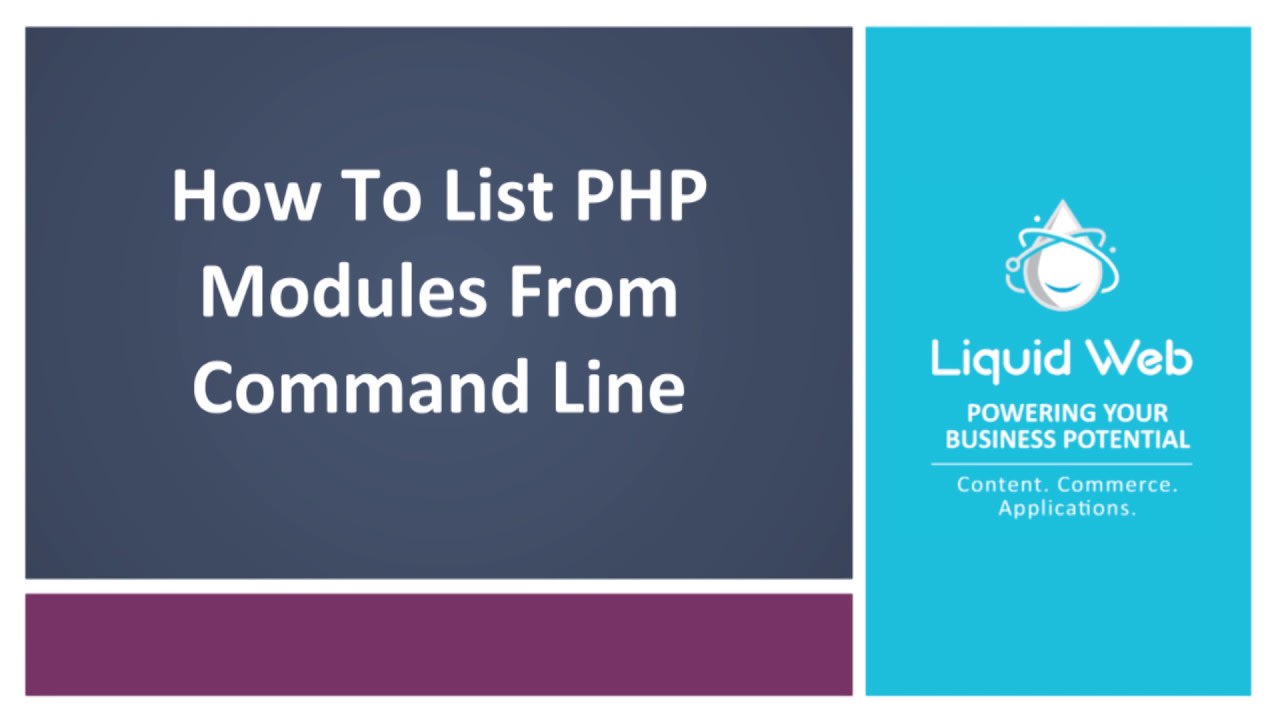Tag: PHP
Our PHP section covers the many uses and installation of PHP across different OS'. Whether you're troubleshooting a PHP issue or installing a PHP driver, our articles are sure to help!
How to Install PHP Extensions on CentOS 8
This tutorial covers the installation of the PHP extension phpredis via the default CentOS 8 package manager DNF. It will also cover the installation of both PHP 7.4 and Redis on CentOS 8.
Installing WordPress using WP-CLI
WordPress has a great GUI-based installation process however some use cases call for CLI! Or, maybe you just feel more at home in a terminal, either way this article will show you how to get your WordPress site setup with just a terminal, using WP-CLI, and maybe a sprinkle of SSH.
How to List Compiled PHP Modules from Command Line
- These instructions are intended specifically for listing the existing compiled PHP modules from the command line.
- Your server environment may be different, but we will go over several options that you might run into. We'll be using an Ubuntu Server with only a single PHP version on it, and two CentOS 7 servers, one with cPanel and one with InterWorx.

Single PHP Version
If your server only has a single PHP version installed, you can run this PHP command anywhere, and it will give you the same list of modules. The general command we will be using is php -m. This command will give you the full list of installed PHP modules/extensions.
PHP-FPM/Nginx Vulnerability – CVE-2019-11043
A new vulnerability in PHP-FPM has been noted which could lead to remote code execution on nginx. An earlier message on Twitter exposed the CVE-2019-11043 bug:
In this article, we will be discussing how to install Multiple PHP Versions on Ubuntu 16.04. Ubuntu 16.04 LTS servers assign the PHP 7.0 version by default. Although PHP 5.6 is currently EOL (end of life) as of December of 2018, some applications may not be compatible with PHP 7.0. For this tutorial, we instruct on how to switch between PHP 7.0 and PHP 5.6 for Apache and the overall default PHP version for Ubuntu.
How To Install the LAMP Stack on CentOS 7
Whether you’re new to hosting websites or a seasoned developer, you’ve more than likely heard of a LAMP stack. The LAMP stack is the base set of applications that most websites running on a Linux server are served from and is commonly referred to as “Lamp”. Rather than a single program that interacts with the website being served, LAMP is actually a number of independent programs that operate in tandem: Linux, Apache, MySQL/MariaDB, and PHP. Throughout this article, we’ll walk through installing the LAMP stack on your CentOS 7 server so you can run a website from any Dedicated Server or Virtual Private Server. Although we’re focusing on installing LAMP on a CentOS 7 server, the steps that we’ll cover are very similar across multiple Linux distributions.
The Best Settings for Configuring FastCGI
In our last tutorial, we showed you how to install Apache’s mod_fcgid and provided Linux scripts to assist in transitioning from mod_php. In this next section, we’ll be discussing how to configure a baseline setting for PHP optimization.
How to Install Mod Fcgid on cPanel’s EasyApache 4 with CloudLinux
When it comes to PHP execution, mod_fcgid (also called FCGI) is one of the heavyweight contenders. There are a few rival handlers, like PHP-FPM or mod_lsapi, which come close to matching its execution speed, but they generally leave something to be desired when it comes to fine-tuning and resource consumption. FCGI is built for speed and includes a myriad of Apache directives that can be leveraged for resource regulation.
Similar to Dropbox and Google Drive, Nextcloud is self-hosting software that allows you to share files, contacts, and calendars. But, unlike Dropbox and Google Drive, your files will be private and stored on your server instead of a third-party server. Nextcloud is a GDPR and HIPAA compliant hosting solution, so your files will be encrypted along with the ability to audit. For this tutorial, we’ll be installing our Nextcloud instance on our Ubuntu VPS server.
What is Webmin?
Webmin is a browser-based graphical interface to help you administrate your Linux server. Much like cPanel or Plesk, Webmin allows you to set up and manage accounts, Apache, DNS zones, users and configurations. As these configurations can get somewhat complicated Webmin works to simplify this process. The result is fewer issues during server and domain setup. Which results in a stable server and a pleasant administration experience. Unlike Plesk or cPanel, Webmin is completely free and open to the public. Unfortunately, here at Liquid Web, we do not offer managed support for Webmin, but we are always willing to assist as much as possible when issues arise. You can download Webmin from their site. Also, you can find some excellent documentation on this interface.
Our Sales and Support teams are available 24 hours by phone or e-mail to assist.

